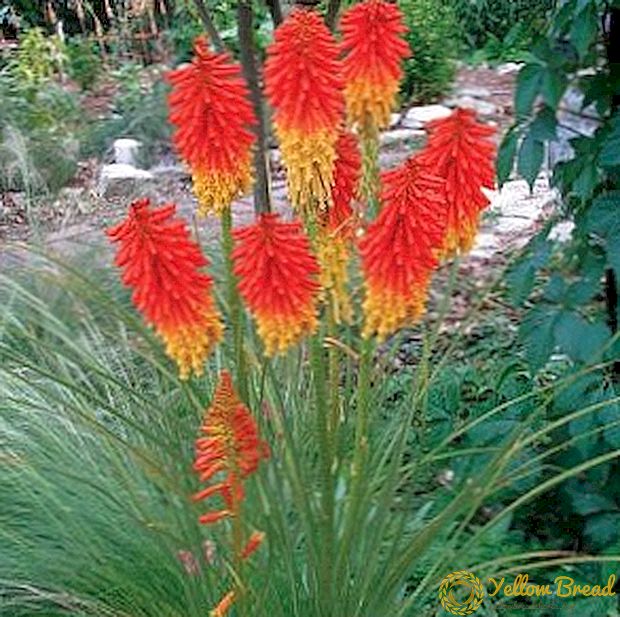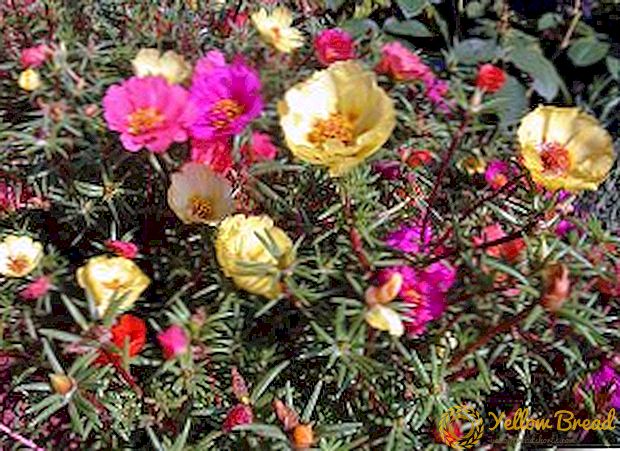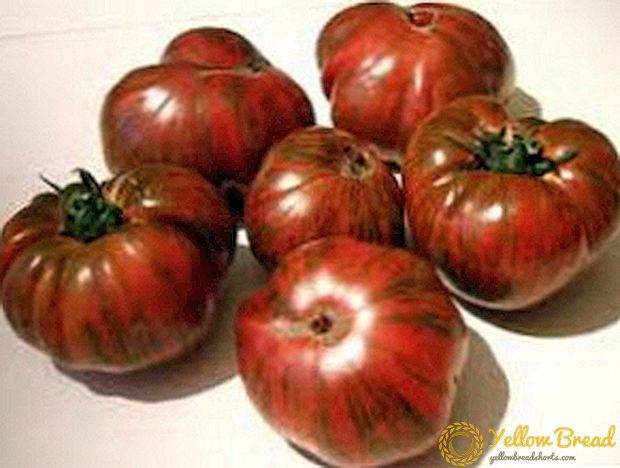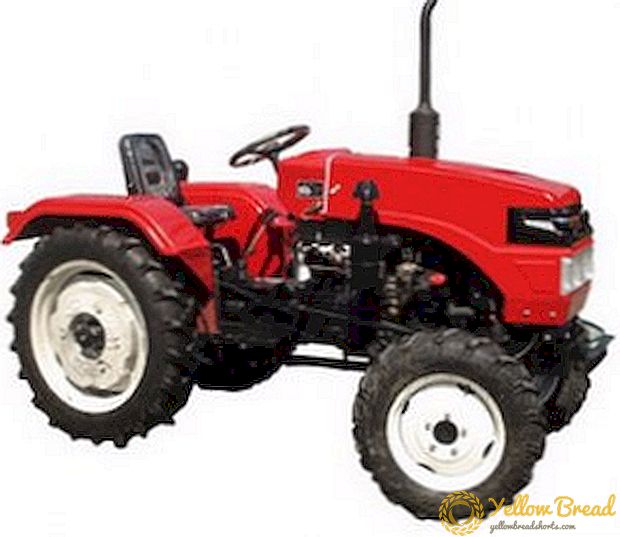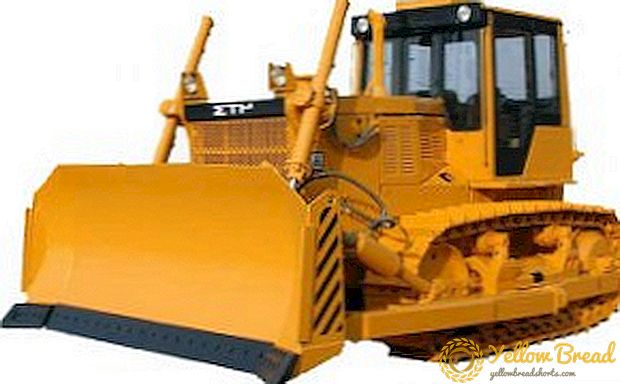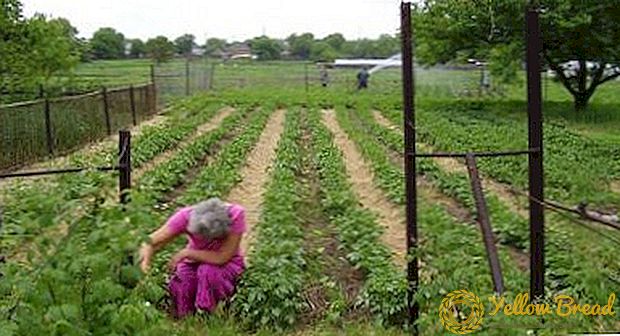
In the forest or in the meadow you can rarely find bare ground, it is covered with a layer of foliage and old, last year’s grass. So nature protects the soil from drying out in summer, and young sprouts from spring frosts and all sorts of pests.
As soon as people figured out this issue, they began to apply the technology of nature in their plots, thereby increasing the yield of some crops. Mulching potatoes at times reduces labor costs - the potatoes do not need to weed and rake, but these are not all the advantages of this technology.
What is mulching and why is it needed for potatoes?
The result of this landing is:
- protection of young potatoes from spring frosts;
- uniform distribution of moisture;
- obstacle to the growth of weeds;
- the retention and distribution of heat under the mulch surface, and as a result, the plants grow and develop much faster.
It is worth noting that during the rainy period, the mulch prevents leaching of the fertile layer from the site. In it rarely live pests.
Potatoes respond very well to mulching, especially if the soil is heavy and loamy in the region. On sandy soils, mulch is indispensable, as it helps retain moisture, while saturating poor soil with necessary fertilizers.
 The following materials are used as potato mulch.:
The following materials are used as potato mulch.:
- straw or mowed grass;
- peat;
- humus;
- sawdust;
- agrofibre or dark film;
- last year's foliage;
- various types of bark;
- cardboard and so on.
Each of these technologies has not only advantages, but also individual disadvantages.
Objectives of the procedure
Thanks to mulching, you can achieve positive results in potato cultivation.:
- Reducing moisture loss - this is especially true if it is impossible to install an irrigation system on the site. A 5 cm layer of mulch can protect the ground from drying out.
- Tubers that are under the mulch layer will not overheat in the heat, as it reflects sunlight.
- Protection of plants from hypothermia.
- After prolonged rains, a dry crust will not appear on the ground, and therefore the tubers will be constantly supplied with oxygen.
- Mulch prevents the growth of weeds, this is true for gardeners, who rarely visit their sites with potatoes.
Landing guide
The soil, before laying on it mulch, you need to carefully prepare:
- weed is removed from the whole area;
- moisten the ground well;
- loosening, which must be at least 5 cm deep;
- introduce mineral and organic fertilizers;
- leave the top layer for a few days for airing, so that after mulching the soil is not compacted.
Ways
Thatch
Mulching potatoes with straw is one of the most common methods, especially among farmers, since a sufficient amount of this material remains in the fields in the fall. Even lawn grass can be used as mulch. It is not necessary to use fresh material; straw that has not been ripened since last season. Straw can be from any culture.
 Straw or mowed grass should be dry. Freshly mown greens will not work, it does not allow air, besides it will develop fungal diseases under it.
Straw or mowed grass should be dry. Freshly mown greens will not work, it does not allow air, besides it will develop fungal diseases under it.
Step-by-step instruction:
- Loosen the ground with a cultivator and cut the furrows at a distance of 60 cm from each other.
- Place tubers in furrows in 30 cm steps.
- Cover the field with a layer of mulch - 20 cm.
- As soon as sprouts with a height of 6 cm appear, cover them with a second layer of straw at 15 cm.
The straw will remain on the site until the autumn. In this situation, additional processing is not required - weeding and hilling. If you wish, you can make foliar feeding. So that the layer of straw is not blown away by the wind, it is slightly sprinkled with earth.
Film
Mulching potatoes with foil is a good way to protect plants and soil from spring frosts in cold regions of the country, since the temperature of the earth under the film will be 2-3 degrees higher.
Step-by-step instruction for the whole process.:
- Pre-prepared soil is covered with black film in late April, when weeds begin to grow. The edges of the material sprinkled with earth or set up a special frame so as not to be blown away.
- As soon as it comes time to plant the tubers on the film, make cuts crosswise, in the places where the seeds are laid.
- Plant potatoes and water each well.
There are two ways to mulch the film.:
- the first - it remains on the ground until harvest;
- second - it is removed after the appearance of the first sprouts.
Peat
Peat is an excellent material for mulching, as it has properties not only to retain moisture, but also to saturate the soil with useful microelements.
Step-by-step instruction:
- The prepared soil is sprinkled with a layer of peat no more than 2-3 cm and lightly clapping.
- Fissures in which potatoes are planted are cut.
- Pour the second layer of material - 5 cm, in this case it is not necessary to compact it.
The advantages of this method are that no need for seasoning, weeding and hilling potatoes.
Hog
Humus mulching - this type of material can be used without fear of harming the plants.
Step-by-step instruction:
 Prepare the soil in the usual way.
Prepare the soil in the usual way.- To plant potatoes, if the weather is dry, then the area should be moistened.
- Lay a layer of humus on top of 10-15 cm.
The only drawback of this method is that you need a lot of humus. Humus is a storehouse of trace elements and vitamins for plants., it perfectly retains moisture, interferes with the growth of weeds, and at the same time suppresses most pathogenic bacteria. Compost is suitable for this type of mulching.
Do not forget that the humus is saturated with nitrogen, and it is better not to use it on fatty soils, as there will be a rapid growth of the foliage. And this in turn can prevent the formation of tubers.
Sawdust
Mulching with sawdust - the most common and popular method of shelter. Especially often it is used in the northern regions of the country. Under a warm shelter of sawdust, potatoes sprout faster and do not rot, as sawdust acts as an absorbent.
Step-by-step instruction for the whole process.:
- Before you grind the soil with sawdust, prepare it - weed and watered.
- Next is planting potatoes in the ground.
- As soon as a crust forms on the surface of the earth, the aisles are covered with cardboard, and dry sawdust is poured on top with a layer of 5-10 cm.
Thanks to this method, we do not need to weed the site, but it is worth remembering that sawdust is not fertilizer and therefore it is strictly necessary to apply fertilizer before planting potatoes.
Possible mistakes
Analyze the most common mistakes that gardeners make when mulching:
- Many gardeners mulch the soil with straw in early spring - this is not worth doing. The fact is that under the shelter of straw the earth warms up much slower - it reflects the sun's rays. Therefore, before covering the ground with this material, you need to wait until it is fully heated.
- When using the film, it must be remembered that it does not allow air and water to pass through; therefore, after the germination of potatoes, it must be removed from the site, or air vents must be made. Another thing is agrofibre, which transmits moisture and light, it can not be removed before harvesting.
- Hay or lawn grass when used as mulch should be well dried, otherwise the potato will hit phytophthora.
- Many gardeners think that it is not necessary to irrigate the mulch plot at all, but this is not so. If there is a dry, hot summer, then it is necessary to irrigate the soil, although not as often as open ground.
- Peat is a good material for mulching potatoes, but there is a danger of harming plants if you use the wrong material. For mulch they take only transitional or lowland peat, it should be dry and loose.
- Some gardeners do not maintain the recommended layer of mulch.
Mulching is a great way to grow potatoes without the hassle, the main thing is to produce this process correctly.
Conclusion
Worth saying that Mulch is a great way to make your life easier in the summer. Protecting the land with various materials helps the gardener to get a good harvest with less effort. There is no need for constant weeding of potatoes, hilling and watering.

 Prepare the soil in the usual way.
Prepare the soil in the usual way.